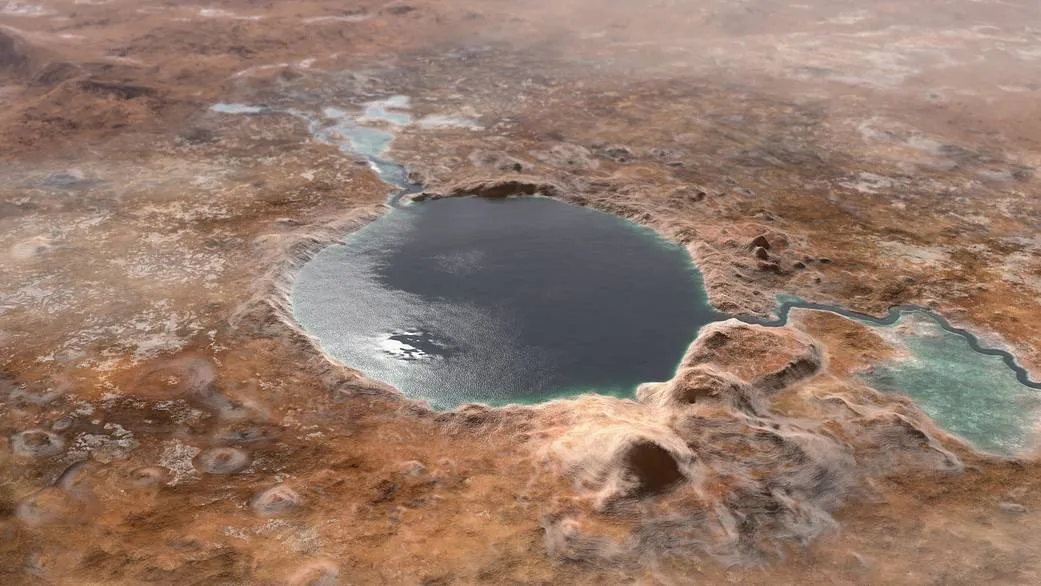Was planet Mars once a warm, temperate world with flowing liquid water like Earth?
Planetary scientists believe that the Red Planet was a much more hospitable world in its ancient history, rather than the rust-coloured barren rocky planet explored today by rovers and orbiters.
New images captured by NASA’s Perseverance rover could show evidence of what was once a flowing river on Mars, much faster-moving and deeper than planetary scientists have seen signs of in the past.
If true, the Martian river would have been part of a larger network flowing into Jezero Crater, where the rover has been exploring since it landed on Mars over two years ago.

What’s more: understanding more about Mars’s wet past and exploring evidence of ancient sites of flowing water could help locate signs of ancient microbial life that may be preserved in Mars’s rocky topography.
This is a key aim for the Perseverance rover: seeking out signs of ancient life by surveying Mars's geology and characterising its climate history.
The region that Perseverance is currently exploring is a 250-metre tall pile of sedimentary rock that exhibits a curved layered structure, suggesting water once flowed there.
The key question is: did that water once flow in shallow streams, or was it a more substantial river system?

The new images from Perseverance are mosaics, composed of hundred of images captured by the rover’s Mastcam-Z instrument, showing coarse sediment grains and cobbles.
"Those indicate a high-energy river that’s truckin’ and carrying a lot of debris," says Libby Ives, a postdoctoral researcher at NASA’s Jet Propulsion Laboratory in Southern California.
"The more powerful the flow of water, the more easily it’s able to move larger pieces of material."
Curving layers of rock within Jezero Crater were first seen by planetary scientists from space years ago, but Perseverance has provided a close-up look for the first time.
These bands are part of a series of such structures known as 'the curvilinear unit', and one unit, which has been named 'Skrinkle Haven', is seen clearly in one of the new Perseverance images.

It seems these curves were caused by flowing water in Mars's ancient past, but was it a winding river, or a braided river that formed regions of sediment called sandbars?
That's one question scientists are keen to answer.
NASA says the curved layers seem to be arranged in rows rippling out across the landscape.
These could be the remnants of a river bank having shifted over time, or could be signs of ancient sandbars.
These structures were most likely taller in the past, but have since been carved out by Martian winds.
"The wind has acted like a scalpel that has cut the tops off these deposits," says Michael Lamb of Caltech, a river specialist and Perseverance science team collaborator.
"We do see deposits like this on Earth, but they’re never as well exposed as they are here on Mars. Earth is covered in vegetation that hides these layers."
The second image captured by Perseverance shows another curvilinear unit about 450 metres from Skrinkle Haven known as 'Pinestand'.

This is an isolated hill that shows sedimentary layers curving skyward, some as tall as 20 metres.
These also could have been formed by a powerful river.
"These layers are anomalously tall for rivers on Earth," says Ives. "But at the same time, the most common way to create these kinds of landforms would be a river."
"What’s exciting here is we’ve entered a new phase of Jezero’s history. And it’s the first time we’re seeing environments like this on Mars," says Perseverance deputy project scientist Katie Stack Morgan of JPL.
"We’re thinking about rivers on a different scale than we have before."
As Perseverance continues its exploration of Mars, thoughts also turn to the Perseverance sample return mission, which will see samples of the Red Planet returned to Earth for study, for the first time in history.
